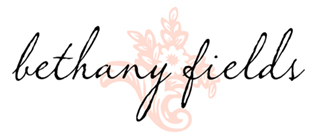Four Methods for a Better Focal Point
February 11, 2022 – Written by Bethany Fields
This week I’m continuing the archived posts from The Beauty of Pastel over on Patreon. I love sharing these with you!
I’m always interested in learning as much as I can about composition, through study and books (this post has some good sources for you), practice, and more study and practice.
Today, I’m focusing in on focal points! 🙂
I love to use this method and you’ll see it often if you start really evaluating art you love.
The first one:
- Lightest light next to darkest dark.
When composing your piece, consider placing your lightest value against an area of your darkest value. This is a wonderful method of adding sparkle and light to your paintings! Consider areas of shade and how foliage can glow against the dark background. Similarly, areas of darkness in water that are reflecting bright lights or the horizon next to a dark patch of trees. These lead the eye and are a very strong way of creating interest. Be careful you don’t overuse this technique as the eye will tend to wander all over the painting and viewers can lose their focus.
Advertisement

Sharp edges are like sharpened memories. When we remember details about an event or a certain time in our lives, some things are sharp and easily brought to mind. Other memories are fuzzy and loose, more of a “feeling” of remembrance. In the same way, paintings that evoke this type of metaphorical “memory” are powerful. Soft edges recede and allow viewers to make up their own minds about the pieces. The lack of detail in soft edges is soothing to look upon. Hard edges force the eye and are wonderful to use in the main focal point areas.
When using this technique, it’s often easier to soften edges of nature as “line” rarely exists outside of man-made objects. It’s harder to soften the edges of buildings as they are stark against the softer world around them. You want buildings to live in their environment instead of on top of it. Taking careful note of the value of the buildings will help you either soften or harden the edges.
Advertisement
This one is easy to explain. Color is powerful! When choosing your focal point, reserve your purest color for the focal point areas. Consider your value and color choices carefully when painting your piece. I like to choose darker, grayed, and slightly desaturated colors for the four edges. I gradually work to more pure color towards the interior/focal point areas. Note…this does NOT mean your purest color needs to always be in the center of the painting! The center is often avoided in paintings for the more pleasing “rule of thirds” composition etc.
Much like sharp edges leading the eye, anything of human interest will lead the eye as well. Animals, people, utility poles, signs, buildings, automobiles, etc. My favorite form of this technique is the road. I love to place roads and paths in my paintings. The one below was not in the original source material and I wanted to break up the large snow field with something to help lead across the piece and into the forest. Notice the light against dark, softened edges etc. Careful placement of these elements helps lead the eye.
Used effectively and with forethought, these techniques are a strong way of creating pleasing compositions in your work. If using source material such as reference photos, consider eliminating many of the details to choose the strongest as your focal point. Other elements can be taken out as they distract from what brought you to that scene in the first place. Light and its effect on the landscape is often what I love to paint. I love to choose one area that will be ‘lit”regardless of how the source material looks. Darkening/dulling/desaturating the rest of the painting helps me tell the story. With plein air, it can be even more difficult to mentally “remove” objects. It takes much practice and a hardened focus to paint this way! Be easy on yourself!
When I am needing some inspiration or encouragement, I love to refer back to my favorite pieces and other artists that inspire me. I test myself on their work and study the compositions. These methods manipulate the viewer into seeing the work in a certain way, almost forcefully creating a reaction. It’s powerful and memorable!!
xoxo,
Bethany



















Loved this video. I also have found that those rubber-tipped sculpter’s instruments work great in pastel work. You can get some interesting marks when using them to manipulate the pastel.